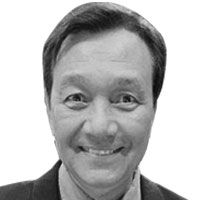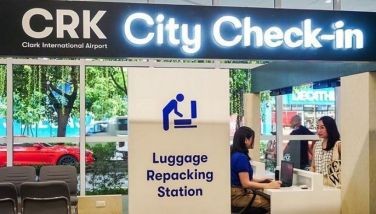Castro healing with PRP therapy

With excruciating pain in both ankles, banged-up Talk ‘N’ Text guard Jayson Castro turned to PRP (platelet rich plasma) therapy a day after the end of the PBA Commissioner’s Cup finals early this month and found orthobiologics specialist Dr. Isagani Leal’s treatment a relief in the quick-healing process.
Castro, 25, missed only a game in the entire second conference and courageously, battled nagging pain in his ankles to play the full route in the best-of-seven series against B-Meg. He exploded for 25 points to lead the Texters to a 92-82 win in Game 6, forcing a winner-take-all showdown. But in the clincher, Castro contributed only five points as the wear and tear of a long grind finally took a toll on the 5-10 spitfire from Philippine Christian University.
Castro hasn’t played in the Governors Cup so far and said he’ll likely be reactivated for the Tropa’s game against Alaska in Tubod, Lanao del Norte, on June 16. By then, Castro should be pain-free and 100 percent ready to play.
Castro said he went to Dr. Leal’s clinic in Quezon City for the PRP therapy and was an out-patient in the procedure that took just over an hour. The procedure involves taking about 30 milliliters of blood from a patient then putting it in a centrifuge to separate the platelet rich plasma from other components. After the separation, the platelet rich plasma is reinjected in the body part that requires healing or treatment, usually a wounded tissue in the knee, ankle or elbow. In theory, the growth factors that the platelets secrete will spur tissue recovery. Blood supply is often low or poor in joints or tissues where there is chronic tendonitis. The injection of platelet rich plasma induces quick healing with the infusion of blood in what otherwise would be a low blood supply area.
Castro said he waited about an hour for the “new” blood to be separated. There is some initial discomfort, like a slightly burning sensation, when the platelet rich plasma is reinjected but once the flow is in process, the patient feels no pain. Castro said only his left ankle received the platelet rich plasma and it was still sore the day after the injection but after a week, he was surprised how quickly it had healed.
* * * *
“In only a week, I could do things with my ankle that I couldn’t before without feeling pain,” he said. “I’m doing regular rehab with my other ankle because it’s not as painful. The PRP therapy really works.”
The treatment traces its history to the mid-1990s when doctors used it for bone healing after spinal surgery or soft tissue recovery after plastic surgery. But in 2008, it became popular among athletes. And as more and more success stories were documented, professional athletes tried it out. In 2009, Tiger Woods had four PRP injections in his left knee after surgery to prepare for his comeback. Los Angeles Dodgers pitcher Takashi Sato took the injection in his elbow to get ready for the 2008 World Series. Other high-profile athletes who did it were Pittsburgh Steelers Hines Ward and Troy Polamalu and Olympic gold medal sprinter Donovan Bailey.
One of the leading exponents of the practice is Dr. Dennis Cardone, an osteopathic specialist with the New York University Hospital of Joint Diseases. He has treated athletes in basketball, football, lacrosse and soccer and even competitive cheerdancers. While the PRP therapy is allowed under Anti-Doping regulations because it involves only the injection of one’s own blood, what is clearly illegal is the infusion of human growth hormones.
In the Philippines, Dr. Leal is considered the top PRP therapy practitioner. He is the director of the Center for Musculoskeletal Science-Asia and a consultant at the De los Santos-STI Medical Center and the Air Force Hospital. Dr. Leal, a Cotabato native, earned a bachelor’s degree in clinical psychology at Far Eastern University and finished his medicine studies at the Manila Central University-Filemon D. Tanchoco Medical Foundation in 1994. He finished a four-year, post-graduate course in musculoskeletal rehabilitation in Tel Aviv, Israel, in 2008.
* * * *
Formerly a Department of Health regional manager of community-based rehabilitation, Dr. Leal specializes in non-surgical orthopaedics and also performs ultrasound guided acupuncture. He has visited the Orthohealing Center in Los Angeles, the Royal Bournemouth Hospital in England, the University of South Florida College of Medicine and the Beijing International Training Center in Musculoskeletal Acupuncture in China to broaden his knowledge of his line of medicine.
Talk ‘N’ Text team manager Aboy Castro said Dr. Leal prescribed complete rest for two to four weeks after the PRP therapy.
Noted orthopaedic surgeon Dr. George Canlas said several PBA players have undergone the PRP therapy. “We’ve been doing PRP locally for the past few years,” said Dr. Canlas. “For it to be successful, the indications are quite strict. But since it’s your own blood, there is no harm in trying it so it’s sometimes done so randomly, hoping it would work. It’s become a common procedure, though.”
Dr. Canlas is scheduled to attend a FIBA medical commission meeting in Austria next month preparatory to the London Olympics. He has been nominated to join the FIBA medical team overseeing 88 games in the Olympics. Whether with the FIBA team or not, Dr. Canlas will be in London as the medical officer of the Olympic Council of Oceania.
- Latest
- Trending



























